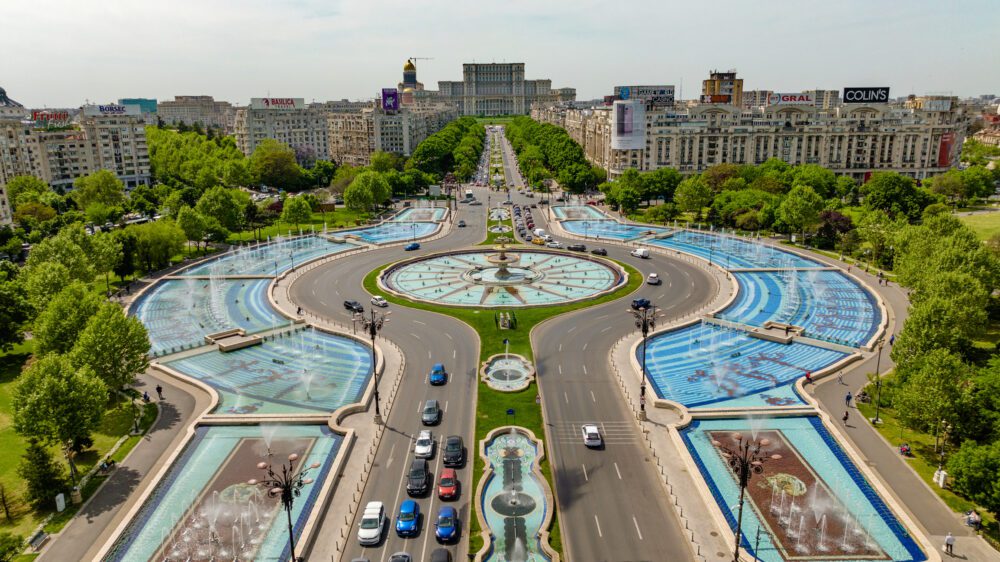
Introduction
Nestled along the banks of the Dambovita River, Bucharest, the vibrant capital of Romania, beckons travellers with its fascinating blend of history, culture, and modern flair. As one of Eastern Europe’s most dynamic cities, Bucharest boasts a rich tapestry of architectural marvels, from majestic palaces and ornate Orthodox churches to sleek communist-era landmarks and contemporary art galleries. Steeped in a compelling history that spans centuries, Bucharest offers visitors a captivating glimpse into its past as well as its vibrant present, making it an enticing destination for explorers seeking to uncover the hidden gems of the region.
Bucharest’s allure lies not only in its historical landmarks but also in its lively atmosphere and diverse cultural scene. From bustling street markets and bustling squares to trendy cafes and bustling nightlife, the city pulsates with energy and excitement around every corner. Whether strolling down the charming streets of the Old Town, known as Lipscani, admiring the grandeur of the Palace of the Parliament, or indulging in traditional Romanian cuisine at a local tavern, visitors to Bucharest are sure to be enchanted by the city’s unique charm and endless array of experiences awaiting discovery. With its fascinating history, vibrant culture, and warm hospitality, Bucharest offers an unforgettable adventure for travellers seeking to immerse themselves in the heart of Romania’s capital city.
Table of Contents
Map of the Best Things to Do in Bucharest
Bucharest Old Town
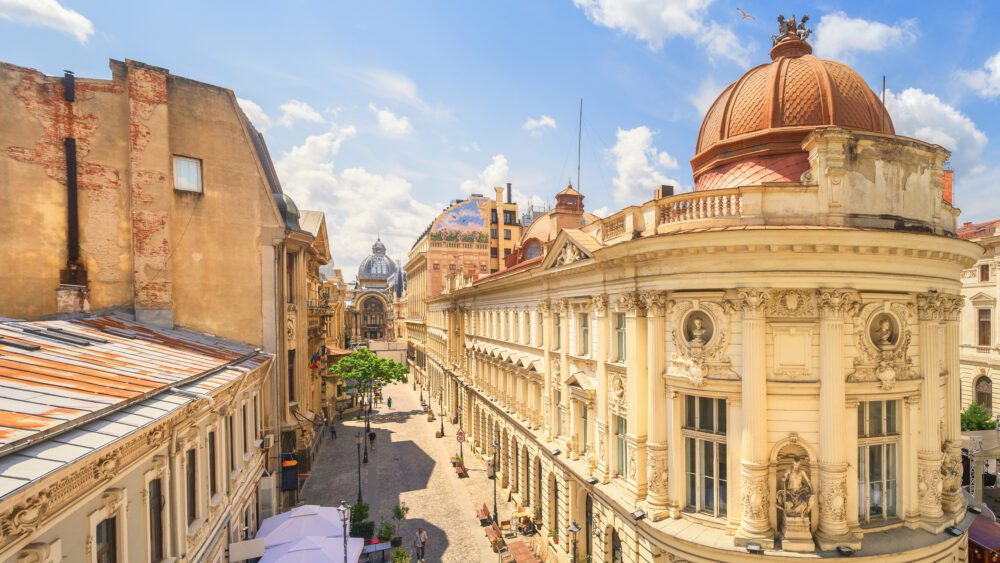
Bucharest’s Old Town, known as Lipscani, is a historic district brimming with charm, character, and a rich tapestry of architectural treasures. Dating back to the 15th century, this area was once the bustling commercial hub of the city, characterized by narrow cobblestone streets lined with merchants’ shops, guilds, and inns. Over the centuries, the Old Town has witnessed the ebb and flow of Bucharest’s history, surviving fires, wars, and political upheavals, yet retaining its distinct allure and authenticity. Today, it stands as a vibrant cultural quarter where visitors can wander through winding alleyways adorned with colourful facades, discover hidden courtyards and medieval churches, and immerse themselves in the lively atmosphere of its bustling cafes, restaurants, and boutiques.
Exploring Bucharest’s Old Town is a delightful journey through time, where each corner reveals a new story and a glimpse into the city’s past. Visitors can marvel at architectural marvels such as the Stavropoleos Monastery, with its exquisite Byzantine-style church, or the imposing Curtea Veche, the former royal court of Vlad the Impaler, also known as Dracula. Art lovers will appreciate the myriad galleries and studios scattered throughout the neighbourhood, showcasing contemporary Romanian art and craftsmanship. Additionally, the Old Town is a haven for food enthusiasts, offering a plethora of dining options ranging from traditional Romanian taverns serving hearty dishes to trendy cafes and rooftop bars with panoramic views of the city skyline.
Stavropoleos Monastery

The Stavropoleos Monastery, nestled in the heart of Bucharest’s Old Town, is a hidden gem of Byzantine architecture and spiritual significance. Founded in 1724 by a Greek monk named Ioaniţa Văcărescu, this small yet enchanting monastery is dedicated to St. Archangels Michael and Gabriel. The monastery’s name, Stavropoleos, translates to “Cross City,” reflecting its mission to spread the Christian faith and serve as a spiritual refuge for believers. Its beautiful church, adorned with intricate stone carvings and frescoes, is a testament to the artistic and religious heritage of Romania. Visitors can wander through the monastery’s peaceful courtyard, adorned with fragrant rose bushes and shaded by ancient trees, offering a serene escape from the bustling streets of the Old Town.
A visit to the Stavropoleos Monastery is a journey into the rich cultural and spiritual history of Romania. Apart from admiring the monastery’s architectural beauty, visitors can attend religious services to experience the tranquil atmosphere and immerse themselves in the rhythmic chants of the monks. Additionally, the monastery houses a small museum showcasing religious artefacts, manuscripts, and icons, providing insights into Orthodox Christian traditions and practices. Practical tips for visitors include respecting the monastery’s sacred spaces and dress code, as well as checking the opening hours for guided tours and cultural events.
Palace of the Parliament
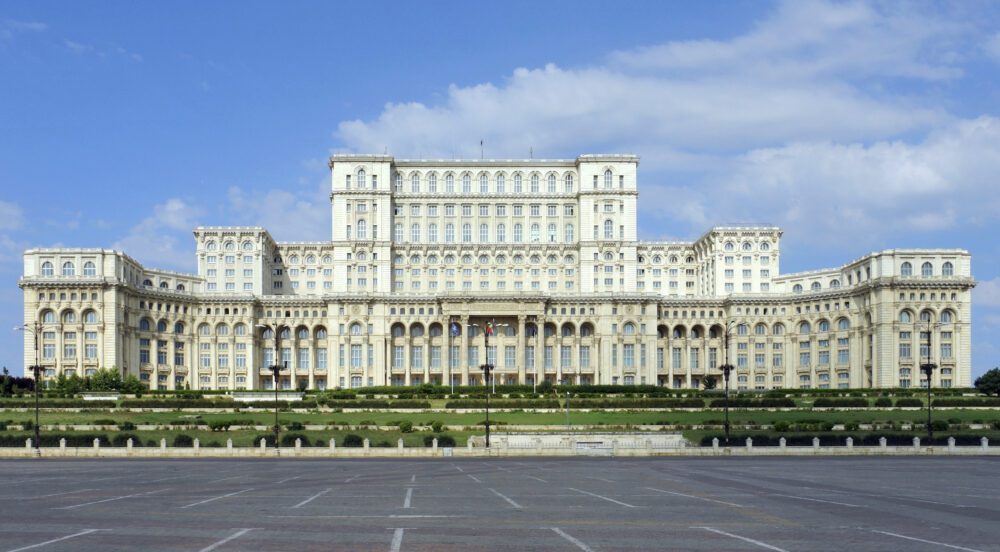
The Palace of the Parliament stands as an imposing symbol of Romania’s communist past and is one of the most iconic landmarks in Bucharest. Construction of this monumental edifice began in 1984 under the orders of Nicolae Ceaușescu, Romania’s former communist dictator, with the aim of creating the most significant administrative building in the world. However, the project faced significant controversy and criticism due to its immense scale, which required the demolition of a large part of Bucharest’s historic city centre. Today, the Palace of the Parliament holds the title of being the heaviest building in the world and is a testament to the grandiose architectural ambitions of the Ceaușescu regime.
Visitors to Bucharest are often drawn to the Palace of the Parliament to marvel at its sheer size and architectural splendour. Guided tours of the palace offer visitors the opportunity to explore its opulent interiors, which feature lavish decorations, marble columns, crystal chandeliers, and intricate woodcarvings. Practical tips for visiting include booking guided tours in advance to ensure availability and gaining insights into the building’s history and significance. Additionally, visitors should be prepared for thorough security checks upon entry and allocate sufficient time to explore the vast complex thoroughly. While the Palace of the Parliament remains a controversial symbol of Romania’s communist era, its monumental presence and architectural magnificence continue to fascinate and intrigue visitors from around the world.
National Museum of Romanian History
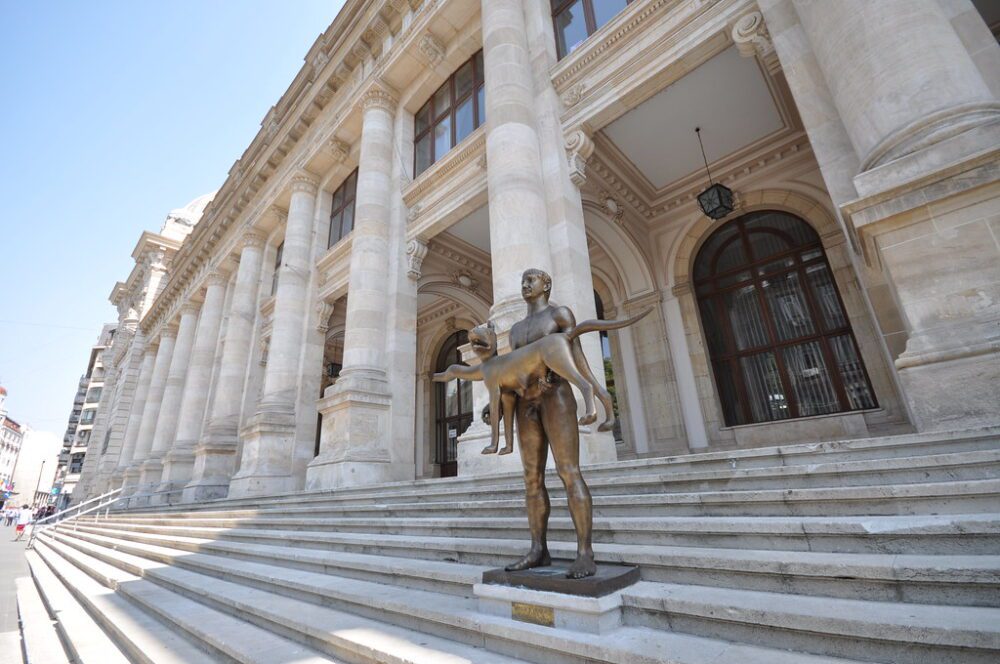
The National Museum of Romanian History, situated in Bucharest, offers visitors a comprehensive insight into the rich and diverse history of Romania. Founded in 1970, the museum is housed in the imposing former Postal Services Palace, a striking Neo-Renaissance building constructed in the late 19th century. Its collections span various periods, from ancient Dacia to modern times, showcasing artefacts, archaeological finds, historical documents, and artworks that illustrate the nation’s cultural heritage and evolution over millennia. Visitors can explore exhibits that highlight significant events such as the Roman conquest of Dacia, the medieval era, the struggle for independence, and the tumultuous 20th century, including the communist regime’s impact on Romanian society.
Practical tips for visiting the National Museum of Romanian History include planning sufficient time to explore the extensive collections, which span multiple floors and cover various historical periods. Guided tours are available and highly recommended for a deeper understanding of the exhibits and their significance. Additionally, visitors should check the museum’s opening hours and any special exhibitions or events before their visit. Photography may be restricted in certain areas, so it’s advisable to inquire about photography policies upon arrival. With its fascinating displays and historical treasures, the National Museum of Romanian History offers an enriching experience for history enthusiasts and anyone eager to delve into Romania’s past.
Cismigiu Gardens
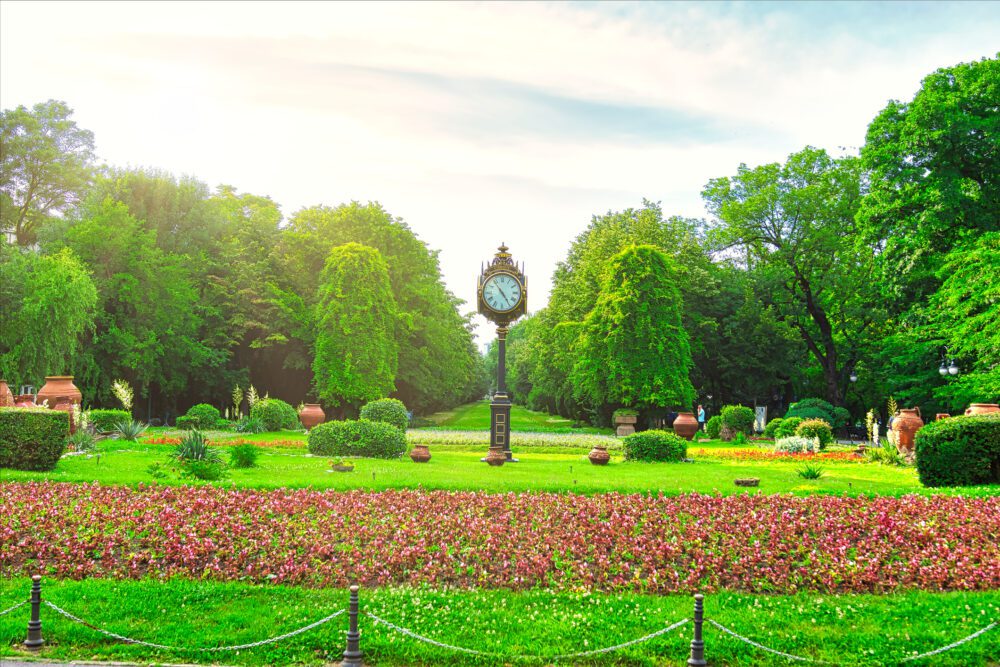
Cismigiu Gardens, one of the oldest and most picturesque public parks in Bucharest, dates back to the mid-19th century. Designed in the English landscape style by the German landscape architect Carl F.W. Meyer, the park features a harmonious blend of winding pathways, verdant lawns, flowerbeds, and tranquil lakes. Its name derives from the Turkish word “cismea,” meaning fountain, as the park originally boasted numerous fountains, though only a few remain today. Over the years, Cismigiu Gardens has been a beloved retreat for locals and visitors alike, offering a serene escape from the bustling city streets.
Practical tips for exploring Cismigiu Gardens include taking leisurely strolls along its shaded pathways, admiring the diverse flora and fauna, and enjoying boat rides on the lake during warmer months. The park is also home to several landmarks, including the Cismigiu Palace, which now houses a restaurant, and the Stirbei Palace, a beautiful neo-Gothic building that serves as the park’s entrance. Visitors can relax on benches, picnic on the grassy lawns, or rent paddle boats to explore the lake. Additionally, cultural events and concerts are often held in the park, providing opportunities for entertainment and relaxation amidst its tranquil surroundings.
Revolution Square
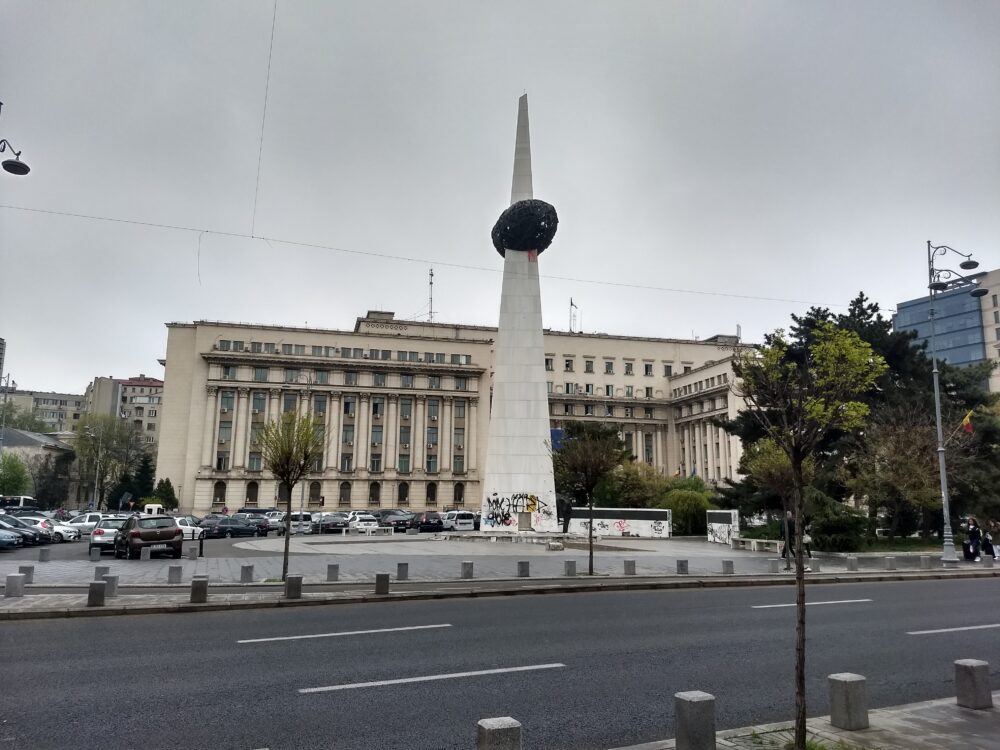
Revolution Square, formerly known as Palace Square, holds significant historical and cultural importance in Bucharest. It gained international attention in December 1989 during the Romanian Revolution when massive demonstrations took place, ultimately leading to the overthrow of the Communist regime and the execution of dictator Nicolae Ceaușescu. The square is flanked by notable landmarks, including the former Royal Palace (now the National Museum of Art), the Athenaeum, the former Communist Party Central Committee building (now the Ministry of Interior), and the University Library. A prominent feature of the square is the Memorial of Rebirth, erected to honour the victims of the revolution and symbolize Romania’s struggle for freedom and democracy.
When visiting Revolution Square, take time to explore the various monuments and buildings that surround it, each with its own historical significance. The National Museum of Art houses an extensive collection of Romanian and European art, while the Romanian Athenaeum is renowned for its stunning architecture and hosts classical music concerts. Visitors can also admire the ornate facades of the surrounding buildings, which showcase a mix of architectural styles ranging from neoclassical to communist-era Brutalism. Additionally, Revolution Square serves as a venue for public gatherings, protests, and cultural events, reflecting its continued role as a symbol of Romania’s tumultuous history and ongoing democratic development.
National Museum of Art of Romania
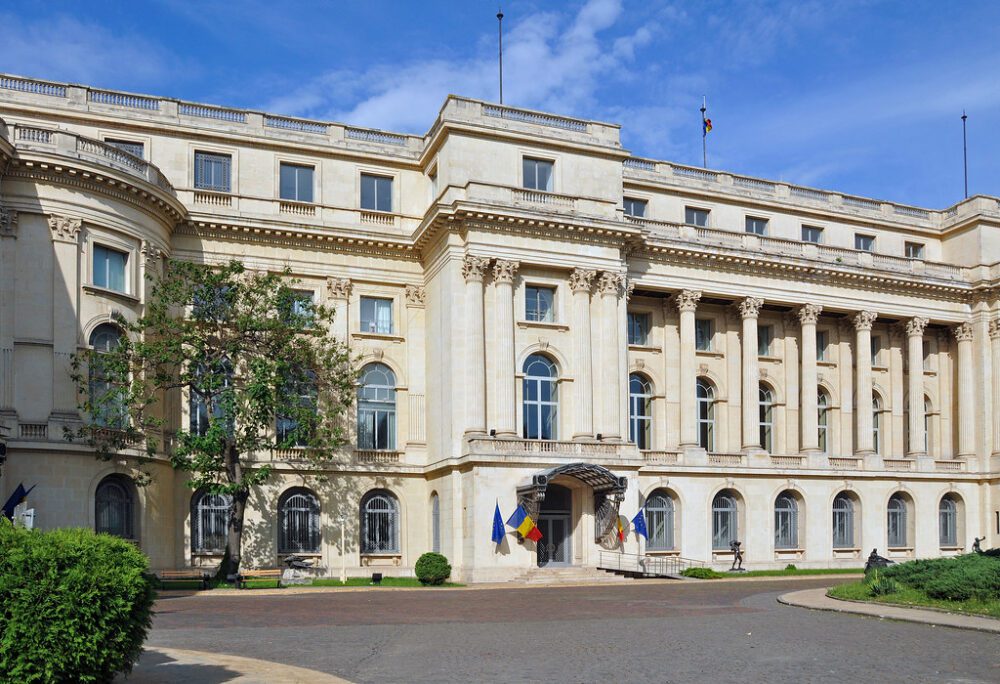
The National Museum of Art of Romania, housed in the former Royal Palace, is one of Bucharest’s most important cultural institutions, boasting an extensive collection of Romanian and European art spanning centuries. The museum’s origins date back to the mid-19th century when King Carol I of Romania initiated the establishment of a royal art collection. Over the years, the collection grew significantly through acquisitions, donations, and bequests, becoming a testament to Romania’s rich artistic heritage. Today, the museum showcases over 70,000 works of art, including paintings, sculptures, decorative arts, and prints, offering visitors a comprehensive overview of Romanian and European artistic traditions.
Visitors to the National Museum of Art can explore a diverse range of artworks, from medieval icons and Renaissance masterpieces to modern and contemporary pieces. Highlights of the collection include works by renowned Romanian artists such as Nicolae Grigorescu, Theodor Aman, and Ion Andreescu, as well as European masters like Rembrandt, El Greco, and Rodin. Practical tips for visiting the museum include checking the museum’s website for current exhibitions and opening hours, as well as considering purchasing tickets in advance to avoid long lines. Additionally, guided tours are available for those interested in gaining deeper insights into the museum’s collections and history.
Romanian Athenaeum
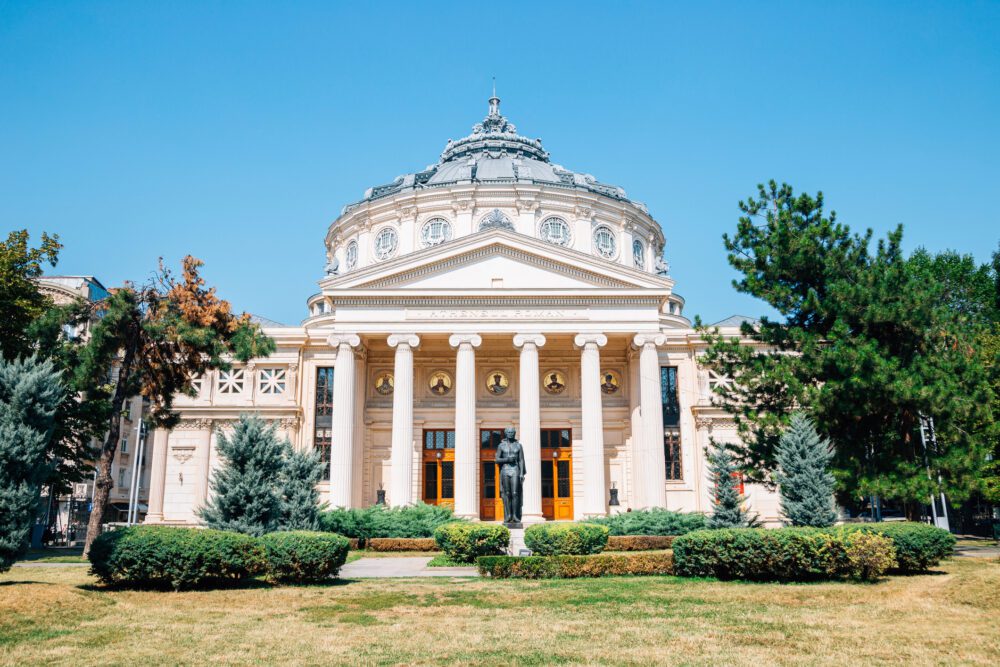
The Romanian Athenaeum stands as an architectural gem and a symbol of cultural pride in Bucharest. Completed in 1888, this neoclassical concert hall was designed by French architect Albert Galleron and funded entirely through public donations, showcasing the deep-rooted appreciation for the arts among the Romanian people. Its iconic dome, adorned with intricate frescoes, is a prominent feature of the city’s skyline. The Athenaeum has played a significant role in Romania’s cultural life, hosting numerous concerts, recitals, and events featuring both local and international artists. Its world-class acoustics and elegant interior make it a premier venue for classical music performances, attracting music enthusiasts from around the globe.
Visitors to the Romanian Athenaeum can admire its architectural splendour and attend one of the many concerts held throughout the year. Practical tips for attending events at the Athenaeum include checking the schedule in advance and purchasing tickets early, especially for popular performances. Guided tours of the building are also available, providing insights into its history, architecture, and cultural significance.
The Triumphal Arch
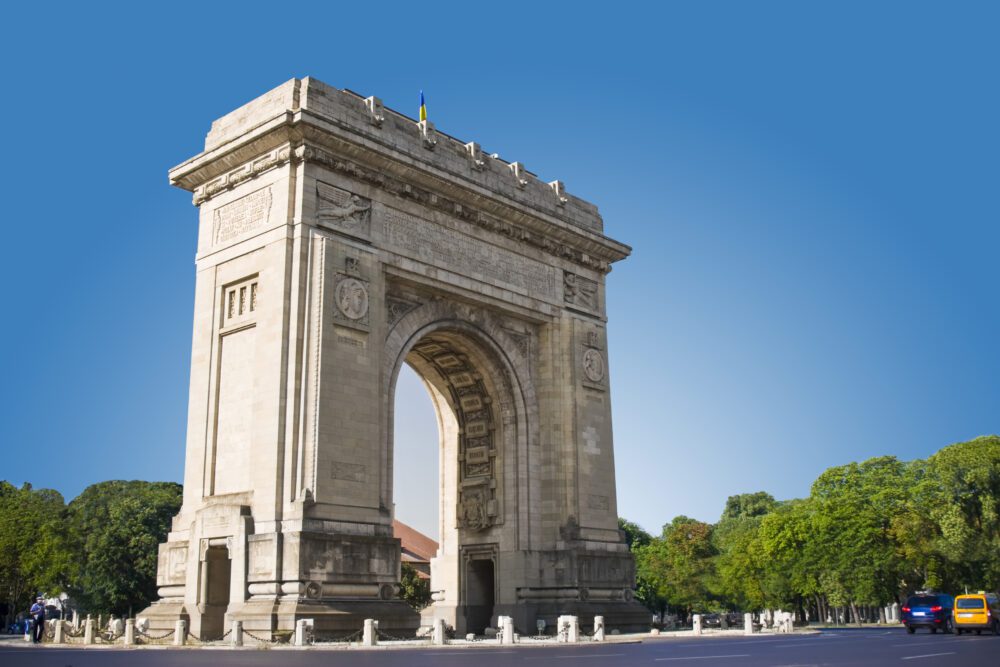
The Triumphal Arch of Bucharest, also known as the Arcul de Triumf, is a majestic monument that stands as a symbol of Romania’s independence and resilience. Originally built in wood in 1878 to commemorate Romania’s victory in the War of Independence, the current stone structure was completed in 1936 and designed by architect Petre Antonescu. Situated in the northern part of Bucharest, the arch features a neoclassical design adorned with intricate sculptures and bas-reliefs depicting important moments in Romanian history. The arch has undergone several renovations over the years, ensuring its preservation as a cherished national landmark.
Visitors to the Triumphal Arch can admire its imposing structure and climb to the top for panoramic views of the city. Practical tips for visiting include checking the opening hours in advance, as the arch may be closed for events or maintenance. Additionally, tourists can explore the surrounding area, which includes a small park and several memorials dedicated to Romanian soldiers.
Herastrau Park
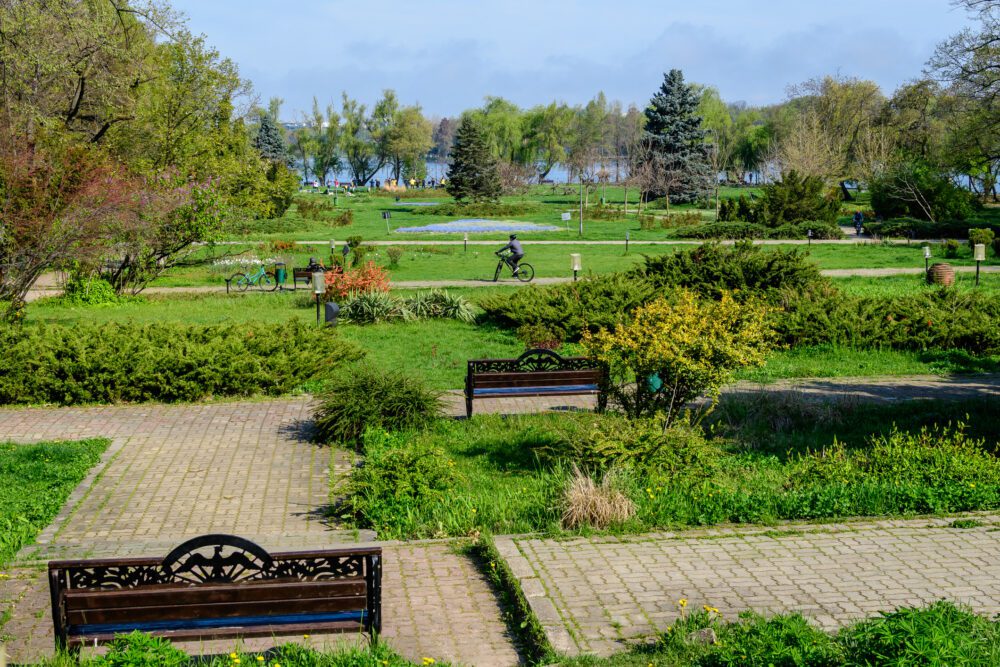
Herăstrău Park, also known as King Michael I Park, is a sprawling green oasis located in the northern part of Bucharest, Romania. Named after King Michael I of Romania, the park spans over 400 hectares and is one of the largest parks in the city. Originally a marshland, the area was transformed into a public park in the 1930s as part of a project to modernize Bucharest. Today, Herăstrău Park is a beloved recreational space for locals and tourists alike, offering a tranquil escape from the bustling city streets.
Visitors to Herăstrău Park can enjoy a wide range of activities, from leisurely strolls along the scenic pathways to boat rides on the picturesque lake. The park is also home to several attractions, including the Village Museum (Muzeul Satului), an open-air museum showcasing traditional Romanian architecture, and the Herastrau Open-Air Theatre, which hosts concerts and cultural events during the summer months. Practical tips for exploring the park include wearing comfortable shoes, bringing along a picnic to enjoy by the lake, and renting a bike to explore the extensive network of cycling paths.
Dimitrie Gusti National Village Museum
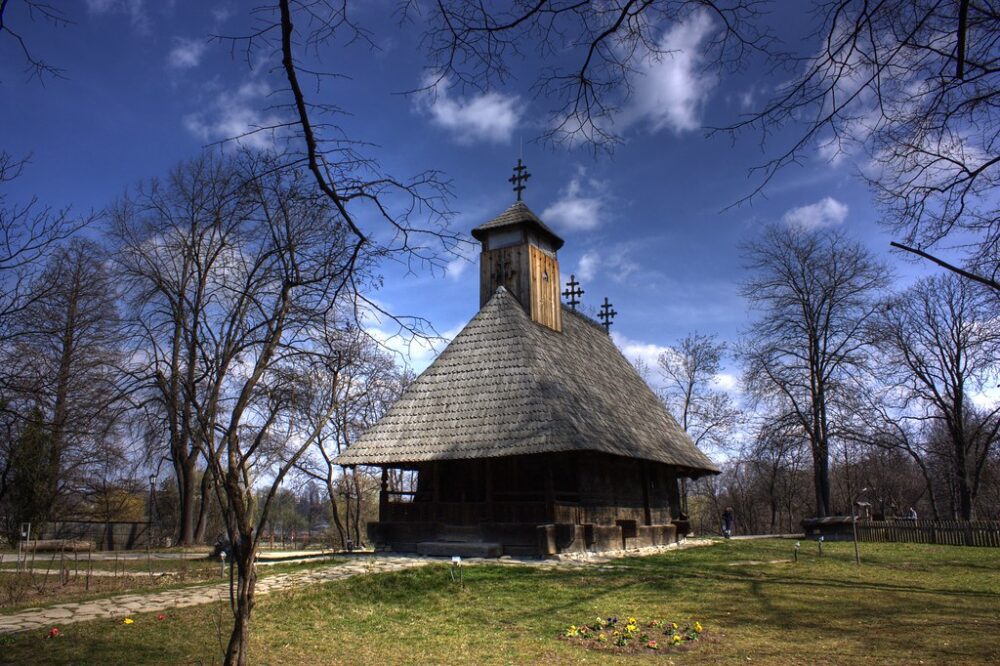
The Dimitrie Gusti National Village Museum, located within Herăstrău Park in Bucharest, is a unique open-air museum that provides a glimpse into Romania’s rural heritage. Established in 1936 by sociologist Dimitrie Gusti, the museum was created to preserve and showcase traditional Romanian village life. Today, it boasts over 300 authentic buildings from different regions of Romania, including houses, barns, churches, and mills, carefully relocated and reconstructed on-site to recreate a typical Romanian village landscape.
Visitors to the Dimitrie Gusti National Village Museum can wander through the cobblestone pathways, exploring the various architectural styles and learning about the customs and traditions of rural Romania. Each building is furnished with period-appropriate items, offering insight into the daily lives of villagers from centuries past. Practical tips for visiting the museum include wearing comfortable footwear, as the terrain can be uneven, and taking advantage of guided tours to gain a deeper understanding of the exhibits. Additionally, visitors should check the museum’s schedule for special events, such as craft demonstrations and folk festivals, which provide opportunities to experience Romanian culture firsthand.
House of Ceaușescu
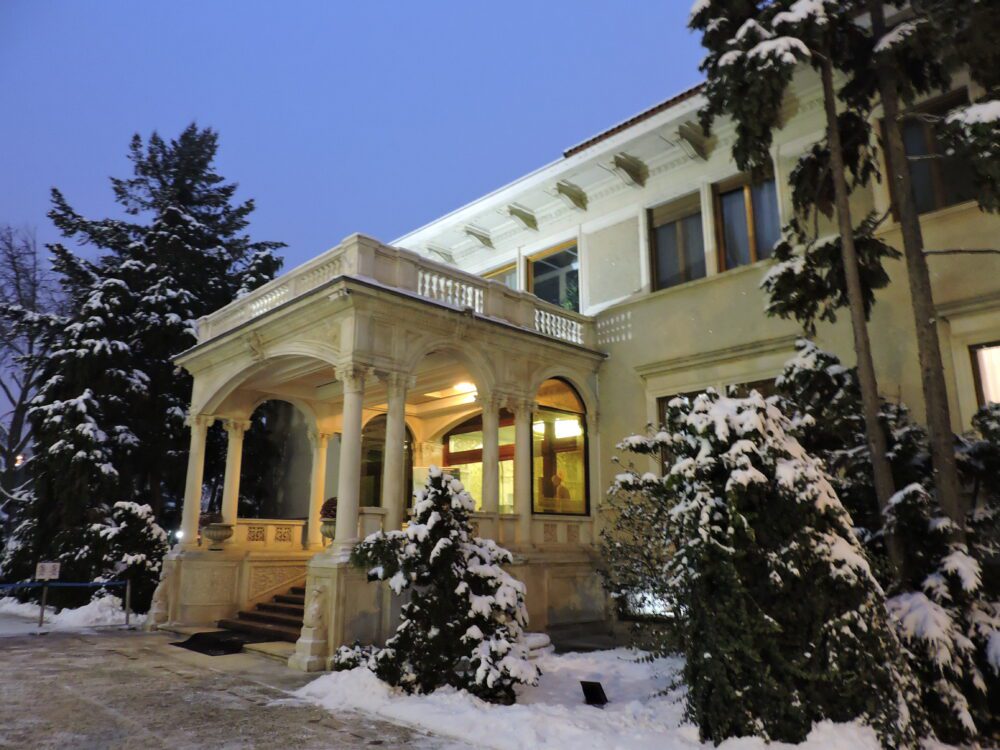
The House of Ceaușescu, also known as the Ceaușescu Mansion or the Spring Palace, is a symbol of Romania’s communist era and the lavish lifestyle of its former dictator, Nicolae Ceaușescu, and his wife, Elena. Located in Bucharest’s Primăverii neighbourhood, the mansion was built in the 1960s and served as the private residence of the Ceaușescu family until their fall from power in 1989. The opulent estate spans over 80 rooms across multiple floors, featuring extravagant furnishings, marble interiors, and elaborate gardens, all reflecting the couple’s taste for luxury and excess.
Today, the House of Ceaușescu stands as a museum, offering guided tours that provide a fascinating insight into the lives of Romania’s former rulers. Visitors can explore the mansion’s various rooms, including the presidential office, dining hall, and even the underground bunker where Ceaușescu and his family sought refuge during times of crisis. Practical tips for visiting the museum include booking tickets in advance, as tours often fill up quickly, and respecting photography restrictions inside the mansion. Additionally, visitors should be prepared for a sobering experience, as the museum offers a stark reminder of the stark contrast between the privileged lifestyle of the ruling elite and the hardships endured by ordinary Romanians during the communist regime. Despite its dark history, the House of Ceaușescu provides valuable insights into Romania’s past and serves as a poignant reminder of the importance of democracy and accountability.
Mogosoaia Palace
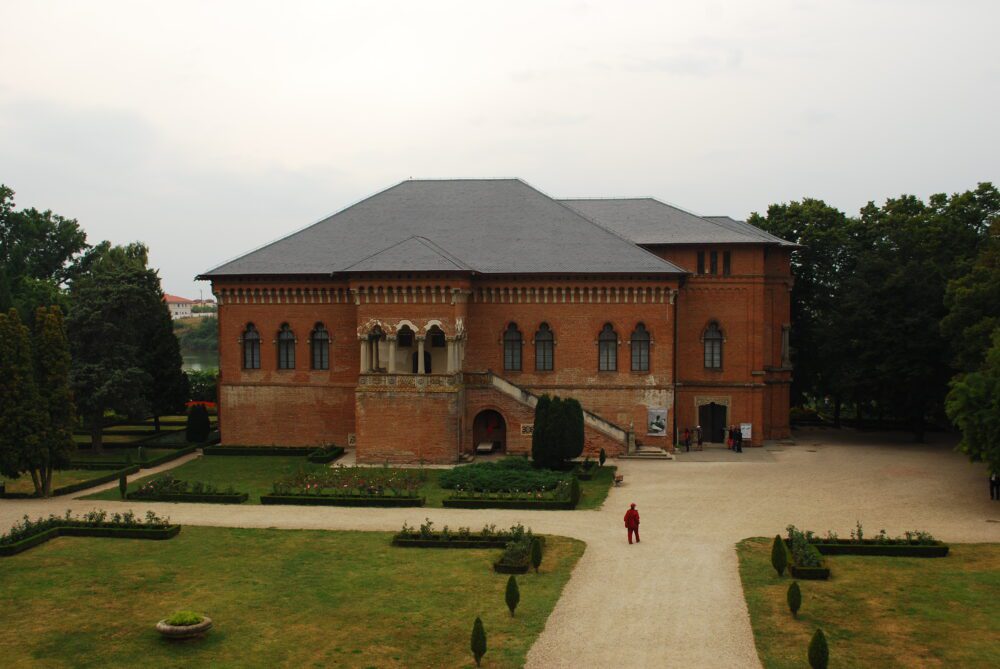
Mogoșoaia Palace, located just outside Bucharest, is a stunning architectural gem that combines elements of Romanian, Ottoman, and Italian styles. Built-in the late 17th century by Constantin Brâncoveanu, a Wallachian prince, the palace served as a summer residence for the ruling family. Its elegant design features a blend of Eastern and Western influences, with ornate facades, intricate carvings, and colourful frescoes adorning the interior walls. Surrounding the palace is a picturesque park, complete with manicured gardens, tranquil lakes, and walking paths, offering visitors a serene escape from the bustling city.
Today, Mogoșoaia Palace is open to the public as a museum, allowing visitors to explore its historic rooms and learn about its fascinating past. Practical tips for visiting the palace include checking the opening hours in advance, as they may vary depending on the season and considering joining a guided tour to gain deeper insights into the palace’s history and architecture. Additionally, visitors can enjoy leisurely strolls around the palace grounds, admiring the beauty of the gardens and taking in views of the surrounding countryside. Mogoșoaia Palace is not only a testament to Romania’s rich cultural heritage but also a tranquil oasis where visitors can immerse themselves in history and nature.
Therme Bucharest
Therme Bucharest is a modern wellness and relaxation complex located just outside the city centre, offering visitors a unique experience of rejuvenation and leisure. Opened in 2016, it is one of the largest thermal spas in Europe, spanning over 30,000 square meters and featuring a variety of indoor and outdoor pools, saunas, steam rooms, and relaxation areas. The complex draws its inspiration from ancient Roman baths, with its design incorporating elements of Roman architecture and aesthetics. Visitors can enjoy a range of therapeutic experiences, from indulging in thermal baths with healing mineral waters to unwinding in aromatic steam rooms and indulging in luxurious spa treatments.
Practical tips for visiting Therme Bucharest include checking the operating hours and booking tickets in advance, especially during peak times, to avoid long queues. Visitors should also consider renting a locker or a private cabana for added comfort and convenience. Additionally, guests can explore the various themed zones within the complex, such as the Galaxy Zone, with its futuristic design and water slides, or the Palm Zone, with its lush tropical vegetation and tranquil pools.
Day Trip to Dracula’s Castle

A day trip to Dracula’s Castle, officially known as Bran Castle, offers visitors a fascinating glimpse into Romania’s rich history and the legendary tale of Count Dracula. Located in the picturesque Transylvanian region, Bran Castle is perched atop a hill and surrounded by stunning natural scenery, making it an iconic landmark and a popular tourist destination. While the castle’s association with the fictional character Dracula is largely based on Bram Stoker’s novel, there is a historical connection to Vlad the Impaler, a medieval ruler known for his cruel methods of punishment. Built in the 14th century, Bran Castle served as a fortress to defend against invading forces and later became a royal residence.
Practical tips for a day trip to Dracula’s Castle include planning your visit in advance, as the castle can get crowded during peak tourist seasons. It’s advisable to arrive early in the day to avoid long queues and make the most of your time exploring the castle and its surroundings. Guided tours are available for those interested in learning more about the castle’s history and legends, offering insightful commentary and access to areas not open to the public. Visitors can also explore the nearby town of Bran, which features charming streets lined with shops selling souvenirs and local crafts.
Conclusion
Bucharest offers a diverse array of attractions that cater to history enthusiasts, art lovers, and nature seekers alike. From exploring the charming streets of the Old Town to admiring the grandeur of the Palace of the Parliament, visitors can immerse themselves in the rich cultural heritage and architectural marvels of the city. The city’s numerous museums, parks, and landmarks provide endless opportunities for exploration and discovery, ensuring that there is something for everyone to enjoy.
Whether strolling through the picturesque Cismigiu Gardens, delving into the country’s past at the National Museum of Romanian History, or embarking on a day trip to the legendary Dracula’s Castle, Bucharest captivates visitors with its fascinating history, vibrant culture, and scenic beauty. With its unique blend of old-world charm and modern sophistication, Bucharest promises an unforgettable experience that will leave a lasting impression on all who visit.
